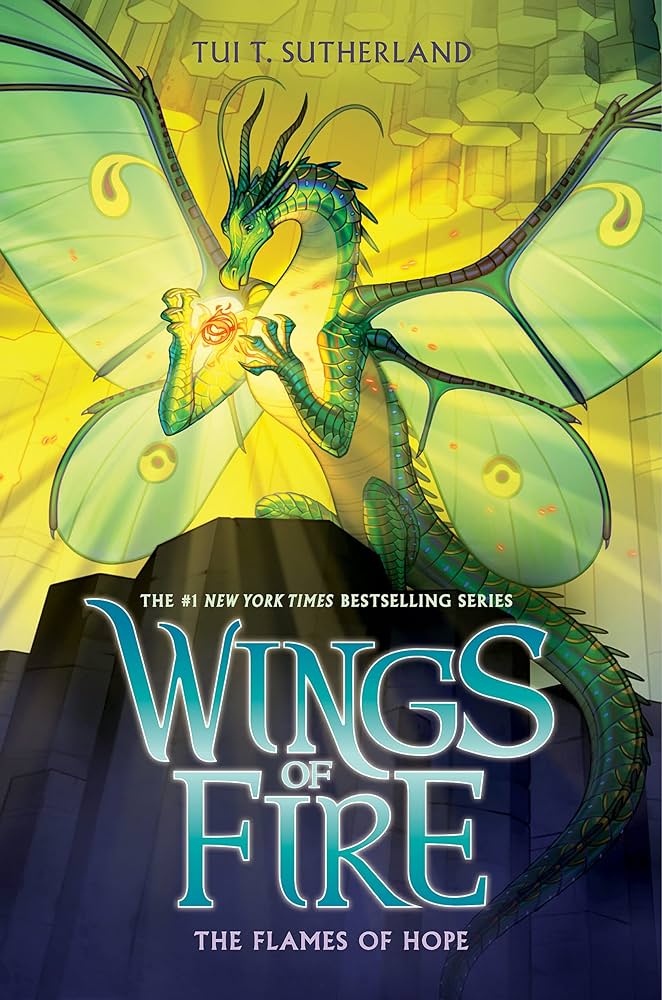With the first book released in 2012, the “Wings of Fire” series, written by Tui T. Sutherland, has become one of the top-selling children’s book series in recent years. The series has so far sold over 14 million copies and has been on New York Times Bestseller for over 214 weeks. The series has aged along with those who were old enough to have read it when it was first released. While children are the main audience for the series, the “Wings of Fire” books are still a very worthwhile series to read even for older audiences because of its complex meanings and themes.
The series is a chronologically ordered epic adventure, told from the perspective of young dragons. The setting is a world of dragons of different tribes made of their species. They are intelligent and have complex societies, a deep understanding of personal and physical value, and the capability to wage war on each other. While humans do exist, they are treated as nothing more than animals, slightly more interesting than monkeys, and are often eaten. The main series has three main stories, or arcs, with five books, each written in the perspective of a different dragon. There are a lot of other books that contain lore and stories of characters that are separate from the main series. The world of “Wings of Fire” is extremely vast and deep. I’ve always found myself in awe again and again by the simplicity with which it covers dark and extremely complex themes. But it’s only a children’s series, right? I disagree.
The setting and plots commonly found throughout “Wings of Fire” are a group of young dragons attempting to stop a conflict. During these attempts, the characters often become associated with murder, betrayal and struggle between higher powers. Love and loyalty are often stretched and crushed. Possibly the greatest example of exceptional story writing, character development, and twisting/questioning of morals and basic rights/life is the book “Legends: Darkstalker.” This book is about a young and ambitious dragon with exceptional power and intelligence, caught between a war caused by his presence in the world who fell in love and struggled to balance his love of power with the well-being of his friends and family.
The story is an exceptionally well-written piece of art portraying life, love and death. The story is very Shakespearean and contains a fair amount of harsh treatment, murder, death and guilt, including the failed promise of a bright future. Other examples of great literature in “Wings of Fire” are present on account of the author’s great talent for ending conclusions to long stories. The ending of the arcs is exceptionally well written and puts together the experiences and events of the last five books to change the world in a way that makes sense and is very beneficial to the lore and story.
In short, “Wings of Fire” is an exceptionally well-written children’s series with copies to be found in nearly all libraries. The series is unfortunately limited by its target audience and lacks the appreciation of older groups with greater understanding of the amazing themes in the books. The characters are so lovable whether they are kind, fierce, loyal, or plain evil. With a sixteenth book expected to be underway, “Wings of Fire” is a title that deserves to be read by everyone anybody anywhere.


